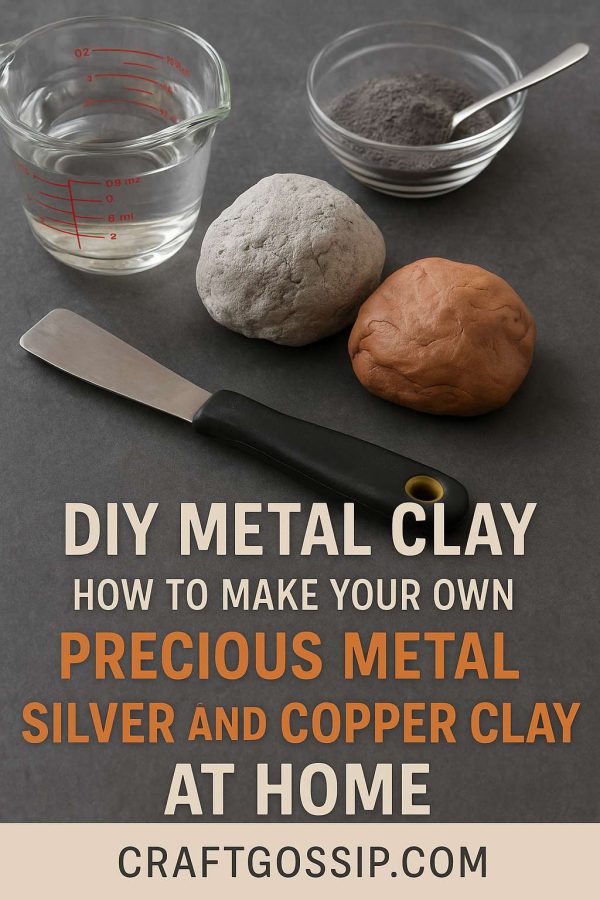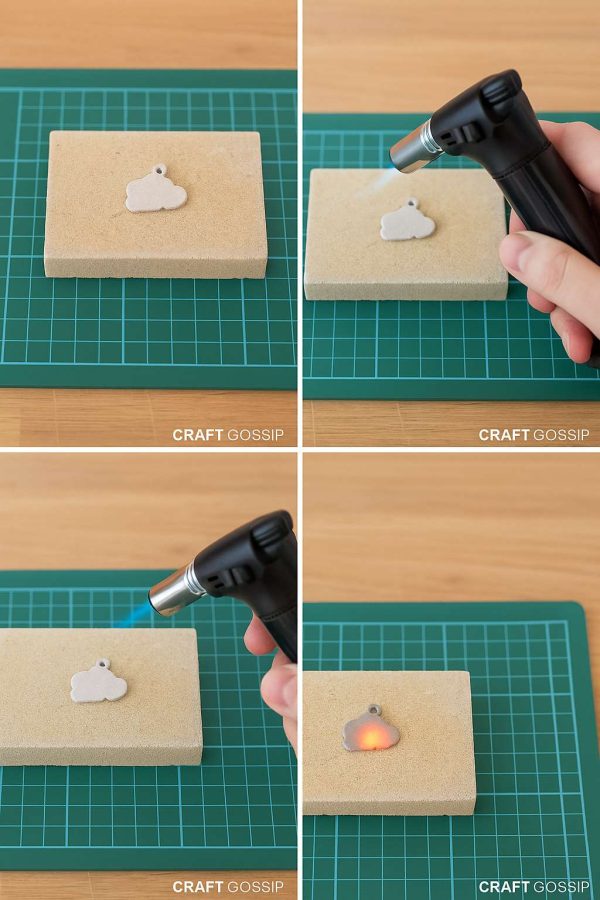![]()
In polymer clay, molds and textures are fabulous tools to have. Some of us (ahem, me) spend a lot of time and money collecting different clay molds to use on our work.
Barbara, from Buntwerkstatt, shares a tutorial for making silicone molds using hardware store silicone and talcum powder
.
In the tutorial, she comments this should be done outside because the silicone will stink until it’s cured. I also advise doing this with unscented powder rather than baby powder. This method can use a lot of talcum powder and it smells for ages.
You might want to do a test nub of this to see how long YOUR mix will take to set up. Either do a small glob or a very small mold to test the process. Then you’ll be more confident when you go to mold and cast your final object.
Check out our own tutorial for making silicone molds here.
And here is my own version of the silicon one too.
Making your own molds for clay and crafts is a fun and easy way to create customized shapes and designs. One of the best materials to use for making molds is silicon, as it is flexible, durable, and easy to work with. Here’s a simple tutorial on how to make your own molds using silicon:
- Choose your mold shape: The first step is to decide on the shape of your mold. You can use just about any object as a mold, as long as it is small enough to fit in your silicon. Some ideas might include a toy, a small figurine, a seashell, or a coin.
- Prepare your object: Before you begin, make sure your object is clean and dry. If it is particularly smooth or shiny, you may want to rough it up a bit to help the silicon stick to it.
- Mix your silicon: Follow the instructions on your silicon package to mix the correct amount of silicon. Be sure to mix it thoroughly, as any lumps or bumps will show up in your finished mold.
- Pour the silicon: Carefully pour the mixed silicon over your object, making sure to cover it completely. You may want to use a small spatula or tool to help smooth out the surface of the silicon.
- Let the silicon cure: Allow the silicon to cure according to the instructions on the package. This will usually take several hours, or even overnight.
- Remove the mold: Once the silicon has cured, gently remove your object from the mold. You should now have a flexible silicon mold that you can use to create custom shapes and designs with clay or other materials.
I hope these instructions are helpful as you get started on your own silicon molds! Happy crafting!



Would Cornstarch work?
When I tried this a few years ago, I used a chalk powder from the garage and it worked fine. You could try cornstarch! My only concern is the fact that it’s organic but I imagine it would “cure” in the silicone.
Could you use the sand free grout powder? I use that to make my own gesso.
Give it a shot. I can’t imagine it would react badly – grout powder is inert. You may have to play with the proportions but you would with the talc as well.
Hi
Can I use this mold for soap making? or do I need other type of silicone?
I’d say yes, you can use it for soap making but I’d experiment first before doing a full batch, as I would with any new material.
Great. I’m inspired. Thank you
Once cured do you think it would hold resin?
Give it a shot with a sample one? It’s not my area of expertise but I’d whip up a dummy mold and a teeny bit of resin and try it.
Is this food safe?
I would think not but I’m actually not sure!
Can the mold be put into the oven once it’s cured?
Hi Elizabeth! I haven’t tried but I would make a dummy blob mold to test first before I did that.
Hi. can i use potasium cabonate inset of powder
You could try? Potassium carbonate is less easy to find where I am than talc powder. I’d probably try something like corn starch if I were looking for a substitute.
Hi Elaine – do you know if the molds eventually shrink-up or noticeably shrivel? Thank you!
I haven’t noticed any change in the ones I’ve made with a version of this. They’re about two years old and not heavily used. I did immediately have some dry / didn’t mix great areas where I picked bits of the mold off but no change later.
What is the best way to make a mold of a succulent?
That’s a good question. Anything with over hang you’ll want a really super flexible silicone mold. So you’ll need to do some experimenting to get the right texture. If you’re casting a live succulent (rather than an inanimate object) it may be a challenge!